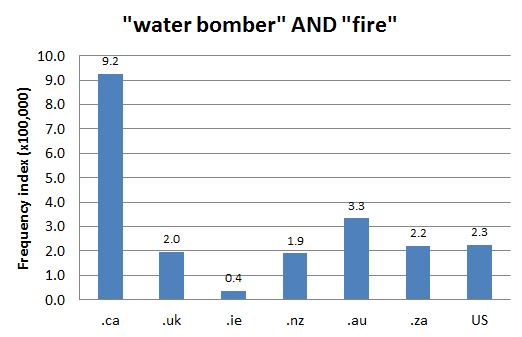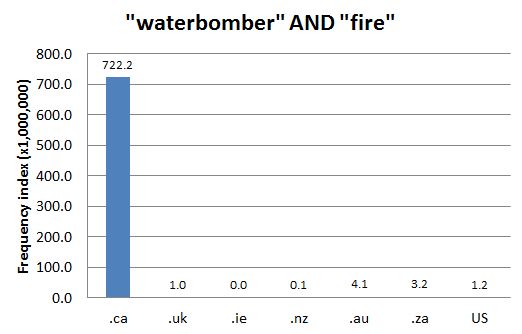DCHP-2
bomber waterbomber, water bomber, water-bomber DCHP-2 (October 2016)
n. — Forestry
a plane used to drop water on forest fires.
Type: 5. Frequency — According to the government of Ontario Ministry of Natural Resources website, waterbomber planes, known also as air tankers, were the brainchild of a pilot-engineer in the Ontario Provincial Air Service during the 1940s. Several trial planes were outfitted with bombing apparatuses and made experimental flights, but it was not until 1957 that a forest fire was successfully waterbombed in Sudbury, Ontario (see Ontario Ministry of Natural Resources reference). The year after, waterbomber planes were outfitted in BC (see BC Forest Service reference). However, the concept of the waterbomber plane may have been Canadian or US in origin, as the US Army Air Forces was conducting similar tests at least as early as 1947 according to an article published in that year in the Christian Science Monitor. It is unclear where the term was first used, although OED-3 marks "water-bomber" as Canadian.
Water bomber and waterbomber appear to be most frequent in Canada when coupled with "fire" according to internet domain searches (see Charts 1 & 2). Bomber is also most prevalent when coupled with "forest fire", but Australia has the highest frequency when bomber is coupled with the more common Australian term "bushfire".
See also COD-2, s.v. "bomber" (3), which is marked "Cdn", and "water bomber", which is also marked "Cdn", and see Gage-1, s.v. "water bomber", ITP Nelson, s.v. "water bomber".- The spelling waterbomber is characteristically Canadian (see Chart 2).
References:
- BC Forest Service "History of Aviation in the BC Fores Service, Part 2" Accessed 21 Oct. 2013
- COD-2
- Gage-1
- ITP Nelson
- OED-3
- Ontario Ministry of Natural Resources "History of the Waterbomber" Accessed 21 Oct. 2013
Images:
Chart 1: Internet Domain Search, 18 October 2013
Chart 2: Internet Domain Search, 21 Oct. 2013

